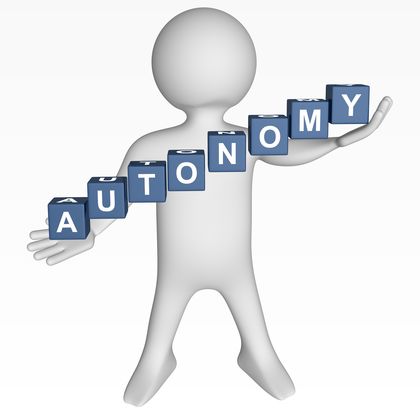“I’m sitting in my home office wearing a bathrobe. The same way I’m not going to start wearing ties, I’m also not going to buy into the fake politeness, the lying, the office politics and backstabbing, the passive aggressiveness, and the buzzwords.” —Linus Torvalds
According to Barrie Davenport, on her website liveboldandbloom.com, “Passive aggressive behavior can manifest in many ways but has the common feature of non-verbal negativity, resistance, and confusion. In relationships, it is a form of emotional abuse that is insidiously destructive to open and honest communication.”
Very few things make work-life worse than working for a passive-aggressive boss. The negative energy that passive-aggressive behavior creates causes distrust, disrespect, poor communication, lack of loyalty, and loss of influence. These are key factors in being able to lead effectively; so, how is your passive-aggressive behavior undermining your leadership?
Loss of trust
If you are passive-aggressive, employees will find you fake. They won’t trust to turn away from you because they know you will stab them in the back every chance you get. The worst part about this type of behavior is that, because it is all done behind employees’ backs, they will never trust you.
How can you fix it? Be real. Never say anything behind someone’s back that you wouldn’t say to their face. Show them that they can take you at your word.
Loss of respect
There is nothing to respect about a person who allows passive-aggressive behavior to play a role in their leadership. This type of behavior is cowardly. It is disrespectful to employees who deserve to know where they really stand and to be treated fairly.
How can you fix it? Be fair. Employees should know where they stand and have the opportunity to defend themselves against untrue allegations and assumptions. Show them that you have their back.
Loss of communication
When employees lose trust and respect for you, as a leader, they no longer care to hear anything you have to say; they can’t believe you anyway. They no longer care to share any information with you; you can’t be trusted not to use it against them and to not take the credit for their hard work for yourself.
How can you fix it? Be open and honest. Your words better match your actions. Employees should never hear from someone else anything that they should have heard from you. Ask for their input, give them the credit they deserve, always follow through, and be honest with feedback.
Loss of loyalty
Once you’ve lost the trust; respect; and willingness to communicate of your employees, you will definitely have lost their loyalty. They will no longer give you 100% of their effort, they will no longer work to make you look better, they will not look out for your best interest, and they will jump ship as soon as they can find a way out.
How can you fix it? Employees will be loyal to you if, and only if, they KNOW that you are loyal to them. Mutual trust, respect, and two-way communication must all be present before there will by any loyalty.
Loss of influence
At the end of the day, your ability to lead at all is based on the influence you have over employees. If you are a passive-aggressive leader, you will lose your influence. Once that is gone, you have nothing left.
How can you fix it? Influence is the catch all. You must eliminate the passive-aggressive behavior completely if you want to regain your influence. Build the trust, earn the respect, repair the communication, and prove your loyalty.
Fix It!!!!
You’ve heard it said time and time again that people do not leave jobs, they do not leave companies, they leave leaders. Passive-aggressive behavior is NEVER okay for a leader. You will lose trust, you will lose respect, you will lose loyalty, and you will lose your ability to influence. It’s time to stop being a passive-aggressive leader and fix it!
© 2016 Elizabeth Stincelli
Liz Stincelli is passionate about recognizing and inspiring the leader in each of us. She is the Founder of Stincelli Advisors where she focuses on helping organizations engage employees and improve organizational culture. Liz holds a Doctor of Management degree with an emphasis on organizational leadership.
Learn more about Liz by visiting her website, stincelliadvisors.com and connect with her on Twitter @infinitestin, Google+, and LinkedIn. You can contact her by email at stincelliadvisors@gmail.com.




